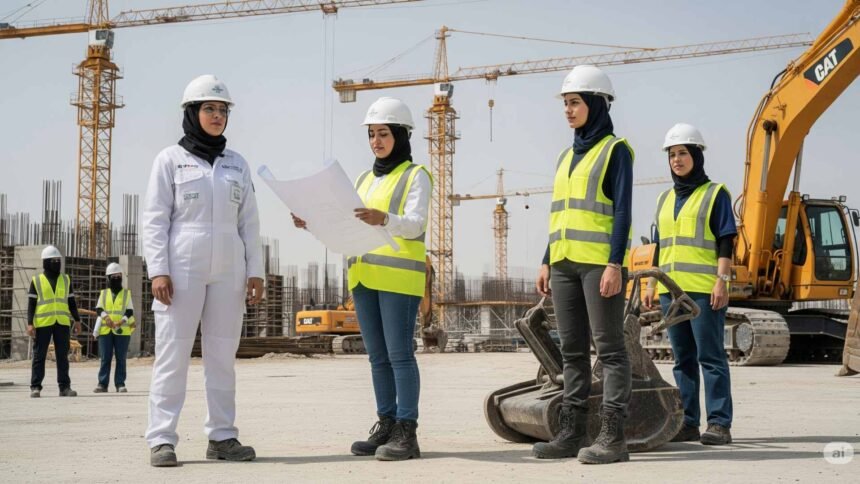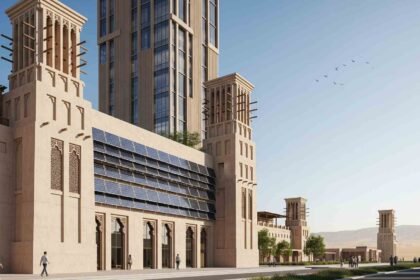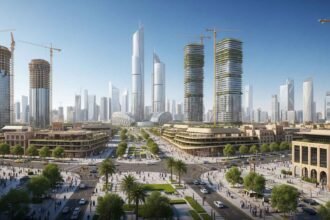In the heart of Saudi Arabia, a quiet revolution is reshaping one of the kingdom’s most vital industries. Women, once largely absent from construction sites, are now donning hard hats and stepping into roles that were traditionally reserved for men. This transformation is not just a story of individual courage but a reflection of broader societal changes driven by Saudi Arabia’s Vision 2030, an ambitious plan to diversify the economy and empower all its citizens. As the construction sector booms with mega-projects like NEOM, women are playing an increasingly pivotal role, breaking barriers and contributing to the kingdom’s development.
Breaking Barriers: From Tradition to Transformation
Historically, Saudi Arabian society has been deeply conservative, with women’s roles often confined to the domestic sphere. Cultural norms and legal restrictions limited their participation in the workforce, particularly in industries like construction, which were deemed unsuitable for women. However, the launch of Vision 2030 in 2016 marked a turning point. Spearheaded by Crown Prince Mohammed bin Salman, this initiative aims to reduce the country’s dependence on oil and includes specific goals to increase women’s economic participation.
Under Vision 2030, legislative reforms have eliminated many barriers to female employment. In August 2020, the Saudi Cabinet approved amendments that removed restrictions on women working in hazardous jobs and industries, including construction. These changes have opened doors for women to enter fields such as engineering, project management, and even on-site roles, areas where their presence was once unthinkable. The government’s commitment to gender equality is further evidenced by policies allowing women to live independently, access government services without a male guardian’s permission, and register as co-heads of households.
A Growing Presence in Construction
The impact of these reforms is evident in the numbers. By the end of 2022, the construction sector in Saudi Arabia employed approximately 152,500 female workers, with Saudi women constituting the majority, according to a report by Saudi Gazette. This figure represents a significant leap from previous years when women were largely absent from construction sites. The sector as a whole employed 2.46 million workers, with Saudi nationals making up 14.6% (369,600 employees), indicating that women are a growing part of this workforce.
Women are filling roles and taking on leadership positions. Female engineers and project managers are contributing to major infrastructure projects central to Vision 2030, such as NEOM, a futuristic city being developed in the northwest of Saudi Arabia, and the Riyadh Metro, a $22.5 billion project. Companies like AtkinsRéalis have reported a surge in job applications from Saudi women, particularly graduates seeking opportunities in the private sector, including construction. This growing presence reflects a shift toward a more inclusive industry, where hiring is increasingly based on qualifications and skills rather than gender.
Challenges and Opportunities
Despite these advancements, women in Saudi Arabia’s construction industry face ongoing challenges. Cultural norms and workplace discrimination can still hinder progress. Many women report facing skepticism from male colleagues and difficulties in being taken seriously in their roles. For example, while women are now legally allowed to work in construction, some employers may hesitate to hire them due to lingering perceptions about gender roles or the costs associated with meeting workplace gender segregation regulations, such as separate facilities.
Moreover, women remain underrepresented in senior leadership positions. As of 2023, only 1.27% of senior-level roles in Saudi Arabia were held by women, according to Expatica. This disparity highlights the need for continued efforts to promote women into decision-making roles within the construction sector.
However, opportunities abound, driven by Vision 2030’s focus on economic diversification and gender equality. The government has introduced initiatives such as training programs and mentorship schemes to support women in male-dominated fields. For instance, events like the “Women in Construction” initiative at Big 5 Construct Saudi celebrate the resilience of women in the industry and provide platforms for networking and inspiration. Companies are also stepping up, with many adopting inclusive hiring practices and fostering cultures that value diversity. AtkinsRéalis, for example, has emphasized its commitment to gender equality, noting that the increased participation of women has diversified business networks and ignited female entrepreneurship.
The construction sector’s growth, fueled by massive investments in infrastructure, further amplifies these opportunities. Saudi Arabia’s construction boom, driven by projects like NEOM and other giga-projects, requires a skilled workforce, and women are increasingly seen as vital to meeting this demand. The government’s goal of increasing women’s economic participation to 25% in the coming years underscores the importance of their contributions to the sector.
Looking to the Future
The future of women in Saudi Arabia’s construction industry is promising. With continued government support and evolving societal attitudes, more women are likely to enter and excel in this field. Vision 2030’s reforms have already led to a significant increase in female workforce participation, from 19.7% in 2018 to 34.2% in Q3 2023, according to AtkinsRéalis. As these trends continue, women are expected to take on even more prominent roles in construction, from on-site work to executive leadership.
The success of Vision 2030 hinges on the full participation of all segments of society, and women in construction are a critical part of this vision. Their presence on construction sites is a powerful symbol of progress, challenging stereotypes and inspiring future generations. As one industry professional noted, the support from universities, employers, and the government is creating a unique opportunity for women in engineering and construction, potentially leading to equal representation in the coming years.







